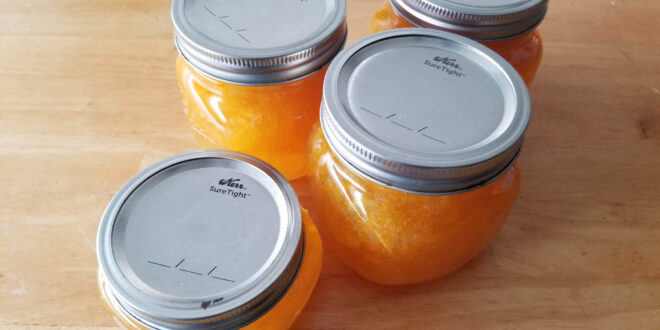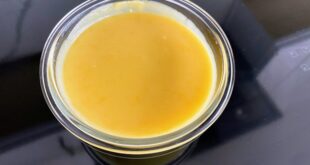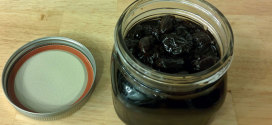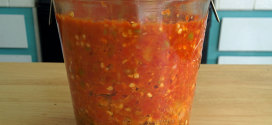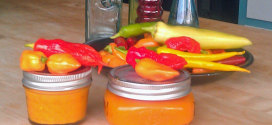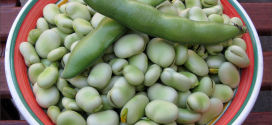We had a lot of oranges and lemons in our Sunnyvale garden this year so I decided to make marmalade, for the first time.
We have a Washington-Navel Orange tree and a Improved Meyer Lemon tree next to each other in a 18-inch wide trench. The trees are twenty years old and pruned to 8 feet tall by 6 feet wide by 24 inches deep.. The Lemon produces a lot of fruit every year (over a hundred). The Orange produces a lot of fruit (several dozen) every other year.
Enter the uncertain world of Jelly-Land where pectin, sugar, moisture, and acidity unite to create a perfect gel or fail to launch and you are left with a runny sauce.
A Quick Marmalade Primer
The earliest ancestor of modern marmalade was made with quinces, a rock-hard fruit closely related to apples and pears. They are naturally high in pectin and acidity, and when simmered in honey they formed a thick, spreadable gel called melimelon, the root of our modern word marmalade. In later centuries, quinces were replaced with citrus fruits, most notably the bitter oranges of Seville, which grew more abundantly and gave the spread a bright, sunny flavor. The fruit itself contributed flavor and acidity, while the peel contained the pectin and an additional dose of concentrated orange flavor.
Pectin
Pectin is found naturally in almost all plant foods, though in varying concentrations. It is one of several carbohydrates, called hemicelluloses, that glue plant cells together and give them strength and structure. Ordinarily, pectin and its kin form tight, strong bonds. When cooked, those bonds become loosened, which causes the fruits or vegetables to soften. Under certain conditions, the pectins can be coaxed into forming new, looser bonds that immobilize your fruit juice into a tender gel, the kind that otherwise would require meat-based gelatin. Baking soda helps create these conditions in orange marmalade.
Cooking up a batch of marmalade is a multistep process, which includes peeling and chopping the fruit, trimming the bitter, spongy white pith from the peels, and simmering the peels to tenderize them. Baking soda is usually added at that latter stage in the process, in a tiny quantity. Baking soda is mildly alkaline, and it helps to break down the chemical bonds in pectin and its related hemicelluloses. When it is added to the pot, it shortens the time needed to soften your orange peels and free the pectin from its original bonds.
A Balanced Approach
Aside from large quantities of pectin — either naturally occurring or added separately — marmalade and other jams require lots of sugar and acidity. Typically, novices run into trouble by using too little of one or the other. Sweet fruits often require a splash of lemon juice to bring the jam’s pH to the range pectin prefers, roughly 2.8 to 3.5. Most orange juice falls right into that range, but if you’re using tart oranges — or Seville oranges, which are acidic and slightly bitter — your marmalade might be too acidic for the best gelling reaction. A pinch or two of soda can correct that, bringing you back into the optimum range. In retrospect, I should have used my ph-meter that I bought for home fermented hot sauce.
Info
This recipe assumes you are going to be hot-bath canning the 4 cups worth of marmalade. You can skip the canning but the safety recommendation is that you should use the refrigerated marmalade within 30 days.
- Time: 2 hrs: 1 hr prep; 1 hr cooking
- Servings: 112
Ingredients:
- 4 cups prepared fruit (about 4 medium oranges and 2 medium lemons)
- 2-1/2 cups water
- 1/8 tsp. baking soda
- 1 box SURE-JELL Fruit Pectin
- 1 tsp butter or margarine
- 5 ½ cups sugar
Directions
- Prepare for canning: Bring canning pot, ¾ full of water to simmer. Wash jars and screw bands in hot soapy water; rinse with warm water. Pour boiling water over flat lids in saucepan off the heat. Let jars and lids stand in hot water until ready to use. Drain jars well before filling.
- Peel oranges and lemons (try to minimize the white pith because it is bitter). Cut the peel into thin silvers.
- Prepare the citrus fruit: Cut the top and bottom off the oranges. Cut the white-pith off the fruit. Cut out each wedge of fruit trying to minimize the skin of each wedge. Special instructions for the lemons: Lemons do not segment very easily so just cut them in half and juice them. Put the prepared fruit and any juice into a 4-cup measure. Add water to fill to 4 cups.
- Mix the peels, water and baking soda in a large 3-quart saucepan. Bring to boil. Reduce heat to medium-low; cover and simmer 20 minutes; stirring occasionally.
- Add the 4 cups of prepared fruit to the peel. Return to boil. Cover and simmer 10 minutes. Scoop out the cooked fruit and peel into a 4-cup measure. Add some of the cooked liquid to fill to 4 cups.
- Pour the 4 cups of cooked fruit and peel into a 6 or 8-quart pot. Stir in the pectin and add the butter to reduce foaming. Bring mixture to full rolling boil (a boil that does not stop bubbling when stirred) on high heat, stirring constantly. Stir in the sugar. Return to full rolling boil and then boil exactly 1 minute, stirring constantly. Remove from heat. Skim off any foam with a metal spoon.
- Ladle immediately into prepared jars, filling to within ½ inch of tops. Wipe jars and threads. Cover with two-piece lids. Screw bands tightly. Place jars in elevated rack in canner. Lower rack into canner (Water must cover jars by 1 to 2 inches; add boiling water if necessary). Cover; bring to gentle boil. Process for 10 minutes. Remove jars and place upright on towel to cool completely. After jars cool, check seals by pressing middles of lids with finger; if lids spring back, the lids did not seal and refrigeration is necessary.
After your batch of marmalade is canned and left for 2 days to cool and achieve its final set, if you open your first jar and find that the marmalade is runny, it means that you did not cook the marmalade for long enough or to a high enough temperature. Your batch of marmalade contains too much water still.
Did the marmalade gel? Drum roll please…
How to fix runny marmalade?
You have two choices to fix runny marmalade if it is not setting properly:
- Live with the runny marmalade and enjoy it despite its flaws: Spread it liberally on toast or better yet, spoon it on vanilla ice cream. Serve it with cake as a sauce.
- Re-boil it: Open all the jars of marmalade, combine them in a pot on the stove, and cook it again up to 220ºF. You will have to go through the process of sterilizing the jars again and canning the marmalade in the sterilized jars in a water bath.
